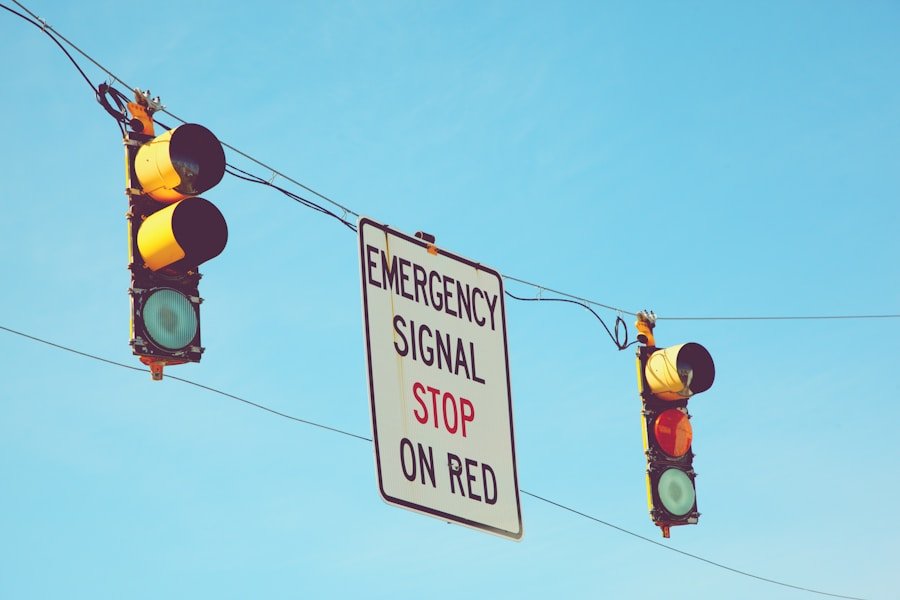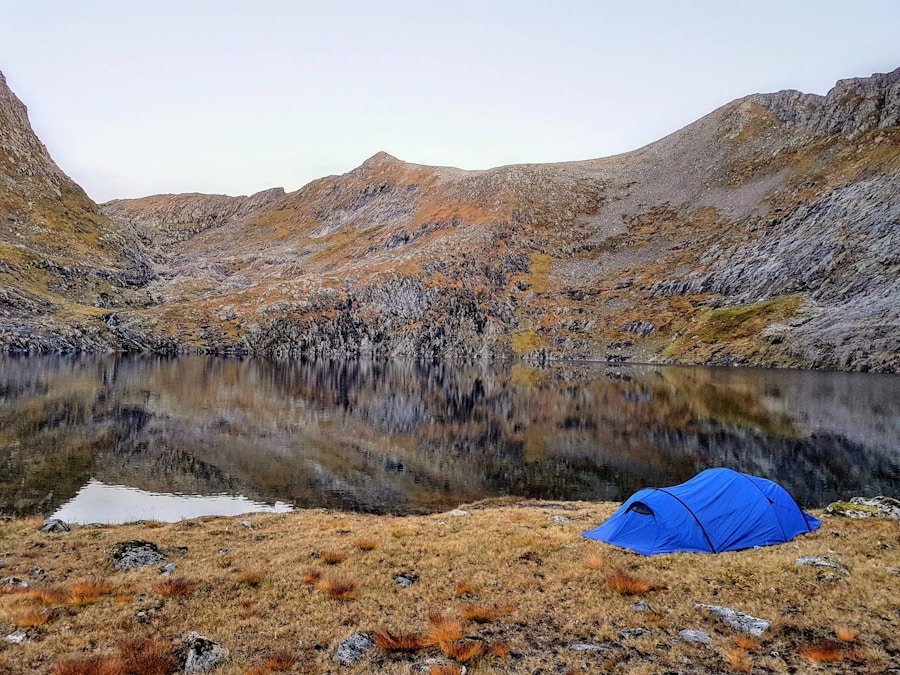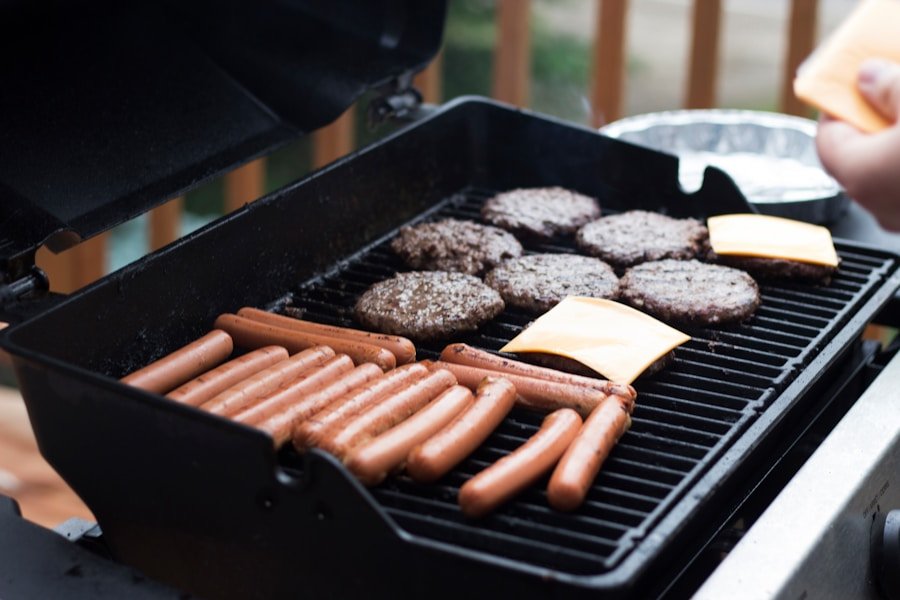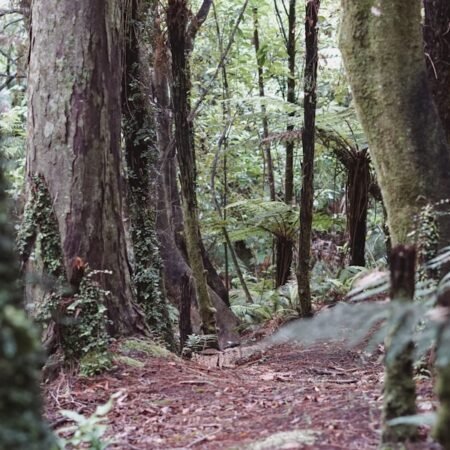In a camping emergency, a whistle can be an invaluable tool for signaling for help. If you find yourself lost or injured in the wilderness, a whistle can be heard from a much greater distance than shouting. The loud, piercing sound of a whistle can carry over long distances and can help rescuers locate you more quickly.
By blowing the whistle in short, repeated bursts, you can create a distinct pattern that will attract attention and signal that you are in need of assistance. Additionally, the sound of a whistle is much more distinguishable from natural sounds in the wilderness, making it easier for others to recognize as a distress signal. In addition to signaling for help in a camping emergency, a whistle can also be used to scare off wildlife.
If you encounter a dangerous animal while camping, blowing a whistle loudly can startle the animal and cause it to retreat. This can be especially useful if you are facing a predatory animal or if you need to protect yourself and your fellow campers from potential harm. The loud, high-pitched sound of a whistle can be an effective deterrent for many types of wildlife, giving you a valuable tool for self-defense in the wilderness.
Key Takeaways
- A whistle can be used to signal for help in a camping emergency by producing a loud, high-pitched sound that can travel long distances.
- It can also be used to scare off wildlife by creating a sudden and unexpected noise that can startle animals and drive them away from the campsite.
- Whistles can be used to alert others to danger by producing a distinct and attention-grabbing sound that can quickly convey the presence of a threat.
- In noisy environments, a whistle can be used for communication by producing a sharp and piercing sound that can cut through background noise and be heard clearly.
- Whistles can be used to locate lost campers by producing a sound that can be easily recognized and followed by others in the area, aiding in the search and rescue process.
Scaring off Wildlife
In addition to signaling for help in a camping emergency, a whistle can also be used to scare off wildlife. If you encounter a dangerous animal while camping, blowing a whistle loudly can startle the animal and cause it to retreat. This can be especially useful if you are facing a predatory animal or if you need to protect yourself and your fellow campers from potential harm.
The loud, high-pitched sound of a whistle can be an effective deterrent for many types of wildlife, giving you a valuable tool for self-defense in the wilderness.
Alerting Others to Danger
Another important use of a whistle in a camping emergency is to alert others to danger. If you come across a hazardous situation such as a rockslide, falling tree, or rapidly approaching storm, blowing a whistle can quickly and effectively warn others in your group of the impending danger. This can help prevent accidents and injuries by giving everyone in the vicinity a clear and immediate signal to take action and seek safety.
In situations where verbal communication may be difficult or ineffective, such as during high winds or heavy rain, a whistle can cut through the noise and ensure that your warning is heard by all.
Communication in Noisy Environments
| Emergency Situation | How a Whistle Can Help |
|---|---|
| Lost in the Wilderness | Use the whistle to signal for help by blowing three short bursts repeatedly. |
| Wild Animal Encounter | Blow the whistle loudly to scare off the animal and attract attention from others. |
| Injured and Unable to Shout | Use the whistle to alert nearby campers or hikers of your location and need for assistance. |
| Nighttime Emergency | Blow the whistle to alert others of your distress, especially when visibility is low. |
In noisy environments such as during a storm or in areas with heavy traffic, verbal communication can be difficult or even impossible. In these situations, a whistle can be an essential tool for communication in a camping emergency. By blowing the whistle in specific patterns or sequences, you can convey important messages to others in your group without having to shout over the noise.
This can be especially useful for coordinating actions during an emergency situation, such as directing everyone to gather at a specific location or to follow a particular route to safety. The clear, distinct sound of a whistle can cut through the chaos of a noisy environment and ensure that your instructions are understood by all.
Locating Lost Campers
If someone in your camping group becomes lost or separated from the rest of the party, a whistle can be an effective tool for locating them. By blowing the whistle at regular intervals, the lost camper can use the sound as a guide to help them find their way back to the group. Similarly, other members of the group can use the sound of the whistle to home in on the lost camper’s location and facilitate their rescue.
This can be especially useful in dense or unfamiliar terrain where visual cues may be limited, allowing for an efficient and effective search and rescue operation.
Emergency Response Coordination
In the event of a camping emergency, such as an injury or sudden illness, coordinating an effective response is crucial for ensuring the safety and well-being of everyone involved. A whistle can be an invaluable tool for organizing and directing emergency response efforts. By using specific whistle signals or patterns, you can quickly and clearly communicate important information to others in your group, such as calling for medical assistance or directing others to gather necessary supplies.
This can help streamline the response process and ensure that everyone knows their role and responsibilities in managing the emergency situation.
Creating Distress Signals
In addition to signaling for help in a camping emergency, a whistle can also be used to create distress signals that can be recognized by search and rescue teams. By blowing the whistle in specific patterns or sequences, you can convey important information about your location, condition, and needs to potential rescuers. For example, blowing three short bursts followed by a long burst can signal that you are in need of immediate medical attention, while blowing two short bursts followed by two long bursts can indicate that you are in need of food and water.
By using these standardized distress signals, you can increase the likelihood of being located and rescued in a timely manner. In conclusion, a whistle can be an incredibly versatile and valuable tool in a camping emergency. From signaling for help and scaring off wildlife to alerting others to danger and coordinating emergency response efforts, a whistle can play a crucial role in ensuring the safety and well-being of everyone involved.
By understanding how to effectively use a whistle in various emergency situations, campers can better prepare themselves for unexpected challenges and increase their chances of successfully managing and overcoming potential dangers in the wilderness.
FAQs
What is a whistle and how does it work?
A whistle is a small, handheld device that produces a loud, high-pitched sound when air is forced through it. It typically has a small opening or mouthpiece and a chamber that amplifies the sound.
How can a whistle be used in a camping emergency?
A whistle can be used in a camping emergency to signal for help. Its loud, piercing sound can travel long distances and is more effective than shouting. It can also help rescuers locate you more easily, especially in dense forests or rugged terrain.
What are some tips for using a whistle in a camping emergency?
– Use short, loud bursts of sound to attract attention. – If possible, use the international distress signal of three short blasts, followed by a pause, and then repeated. – Position yourself in an open area to maximize the sound’s reach. – Keep the whistle accessible at all times, such as on a lanyard around your neck or attached to your backpack.
What should I look for in a whistle for camping emergencies?
When choosing a whistle for camping emergencies, look for one that is durable, waterproof, and capable of producing a loud sound. Whistles made of plastic or metal are common choices, and some may include a pealess design for use in wet conditions. It’s also important to consider the whistle’s size and weight for portability.













